Showing 49–60 of 166 results
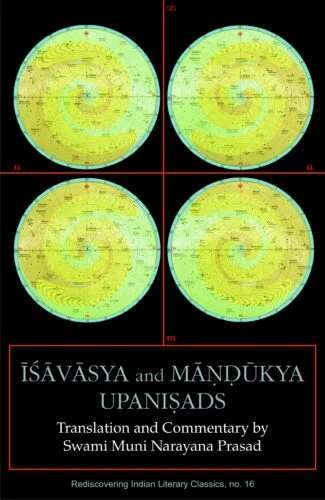
The book contains the original texts in Sanskrit, Roman transliteration and detailed commentaries on the Ishavasya and Mandukya Upanishads, explaining the basic message of the Upanishads Þ Brahmavidya or the science of the Absolute Þ in different ways, the questions asked in each being different.
The volume contains a detailed commentary on two important Upanishads, the Ishavasya and the Mandukya.
The Isha Upanishad states straightaway what Brahmavidya is. It clarifies three different paths in human life: two leading to final liberation and unconditioned happiness and the third leading to the demonic world of darkness and sufferings in life.
The Mandukya Upanishad, which is also the shortest Upanishad, states concisely what Vedanta basically teaches (Everything here indeed is Brahman), how everything is to be conceived, and how it is to be equated with aum. It explains how the monosyllable aum condenses within itself Brahman or atman, the substance in all the worlds.
The volume gives the original texts of the Upanishads in Sanskrit, their Roman transliteration and a commentary for each. It explains the basic message of the Upanishads Brahmavidya or Atmavidya or Vedanta or the science of the Absolute in different ways, the questions asked in each being different. It takes a fresh look at the Upanishads keeping in view all modern developments of thought in science as well as philosophy. The work will interest scholars and students of Hindu philosophy and religion.
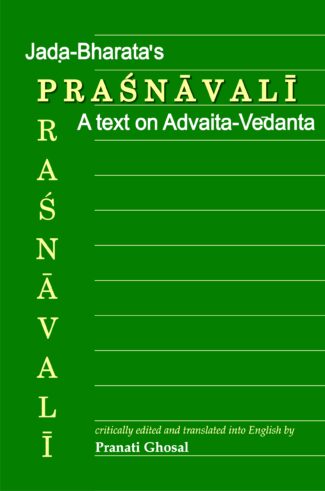
Professor Filippi explores the Indian view of mortal existence from an individuals conception to his/her journey to the Kingdom of Yama with rare scientific objectivity by unveiling a complex network of sentiments, beliefs, scriptural references, customs, etc.
Prasnavali, a less-known yet important treatise, ascribed to Jadabharata, poses fifty-two fundamental questions on Monistic Philosophy. Novelty of this book lies in its question-answer technique provided for both teaching and propagation of Advaita Vedànta in an easy way. In spite of being small in size, the work covers almost all the important topics expected to be known by a devotee or a learner. There may be different groups of scholars and students of Vedanta affiliated to various mathas who long for finding proper answers to the queries that arise in this field from time to time. Jadabharata earnestly took up this uphill task through this treatise. Thus he deserves a special credit for creating interest in Advaitism among the people belonging to the community of both the learners and devotees.
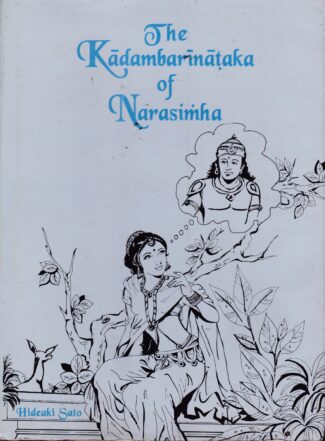
This is the first-ever English translation of Narasimhas Kadambarinataka and its critical evaluation. It highlights the plays importance in Sanskrit-Prakrt literature of medieval India and compares it with the kavyas of classicists like Sudraka.
It is the first ever English translation of Narasimhas Kadambarinataka. And also its first critical evaluation, highlighting not only its high importance in Sanskrit-Prakrit literature of medieval India, but also how this fourteenth-century play compares favourably with the masterly kavyas of the classicists like Sudraka, Kalidasa, Bhavabhuti and Rajashekhara.
Kadambarinataka is essentially a dramatic version of Kadambari : an internationally celebrated novel/romance of the seventh century, authored by the legendary Bana and his son. For over six centuries, it has remained unacknow-ledged and unnoticed owing to the prevailing prejudice against the whole range of Sanskrit-Prakrit literature that came to be written after the 10th century or so. Though the play saw its only printed edition in 1936, it was not studied in perspective nor has it so far been translated into any language. Dr. Hideaki Sato retrieves Kadambarinataka from the centuries of oblivion, offering this literary masterpiece, in two parts, to English-knowing audiences the world over. Part One, in the nature of a critical introduction, focusses on Narasimha: the author, his times and his writings; together with insightful analyses of his natakas sources, plot structure, language, style, innovative elements, and how far it has deviated from Banas Kadambari. Part Two comprises the English rendering of Kadambarinataka which, based directly on its two manuscripts available today, also carries extensive textual notes.

The book presents the original Sanskrit text of the Kampilyamahatmya of Durgadatta Sharma, a harmonic compilation on the greatness of Kampilya composed from different references to traditional Indian sources, along with its translation in English. It deals with identification and location of the holy tirtha of Kampilya and ancient legends and dynasties associated with it.
The mahatmyas constitute an important streams of the Indian tradition, putting in evidence the greatness either of a place or of a character. Among the many mahatmyas, the Kampilyamahatmya, focusing its attention on the region of Kampilya, has a unique significance, as the exact identification and location of the holy tirtha of Kampilya remains a subject of mystery and controversy even today. Kampilya was the capital of the ancient realm of Pancala. The area around Kampilya, also known as Kaliksetra was the environment where King Drupadas daughter, Draupadi, manifested herself and where the tournament for the choice of her husband took place. Dronacarya, the weapon teacher of the Pandavas, Dhrstadyumna, the brother of Draupadi, and many other famous warriors of the Mahabharata have their names joint with this place. Written in the twentieth century, the Kampilyamahatmya is a harmonic compilation on the greatness of Kampilya composed from different references of Indian traditional sources; it is the result of a research begun by the grandfather of the author, that has been accomplished, through family transmission and with the help of other poets’ previous works. The book, presenting the original Sankrit text, with its fluent translation in English, provides a plethora of information on ancient legends and dynasties of pre-Pauranic and Pauranic times, will be useful to scholars of ancient Indian mythology and history. It will prove extremely absorbing and informative for general readers as well.

This book explores the ancient village of Gudimallam, home to the unique Parasuramesvara Temple and the earliest anthropomorphic Siva-linga from the second century bCe. It highlightsthe site’s historical, artistic, and cultural significance amidst a scenic natural setting.
Kashi is more than a city; it is a living, breathing embodiment of spirituality – a realm where time appears to stand still and the mortal seamlessly merges with the divine. It is a sacred place where life and death coexist harmoniously, and every street and corner echoes pious, sacred, and divine experiences. Known as Varanasi, Kashi is the spiritual epicentre that has captivated saints, scholars, and seekers for millennia. Revered as the divine abode of The Supreme Bhagavān Shiva, the cosmic destroyer and the ultimate giver of liberation, this city transcends time. It resonates with the timeless rhythm of devotion, purity, and liberation – a home for the soul. This sacred city offers the dissolution of karmic bonds – something not readily found in the heavenly realms. Every corner of Kashi bears Bhagavān Shiva’s infinite grace. Its ghats (stairways) whisper stories of liberation, its temples stand as enduring monuments of devotion, and its air vibrates with the echoes of ancient chants. Among these sacred sites, Manikarnika Ghat reigns as the holiest, embodying the essence of moksha. Scriptures proclaim that a single dip in the waters here merits visiting all pilgrimages combined. The sacred Ganga river purifies the soul, erases karmic debts, and leads to eternal peace

This English version attempts to unravel the mystery of death. It shows how a young seeker, calling upon Yama, insists on knowing the secret of all secrets, with specific questions, like: what is death? Why people fear death when they know it to be inevitable?
Man has always been perplexed with the now and hereafter of his worldly existence. The enigma, called life, with all its attendant uncertainties and everyday strifes and irritants, continues to defy experimental/realistic investigation despite all the exciting advances in science. We still age, we still die. We are as mortal as ever. Life remains a mystery. And death remains, in Shakespearean phraseology, the undis-covered country. A masterpiece among the writings of its genre, Katha Upanishad attempts to unravel the mystery of death though, in its totality, it is an insightful exposition of brahmavidya: Knowledge of the Absolute/Supreme Reality. In a well-devised dialectical situation, the Upanishad shows how a young seeker, calling upon Yama, none other than the God of Death himself, insists on knowing the secret of all secrets, with specific questions, like: What is death? Why people fear death when they know it to be inevitable? What happens at death? And what, if anything, continues to exist after death, and how? the questions which the deity answers, amidst widely-ranged wisdom teachings. Swami Muni Narayana Prasad here offers a lucid English version of this time-honoured Upanishad, together with exhaustive commentary, the original Sanskrit text and its Roman transliteration. Written at a time when the profoundly symbolic Vedic yajnas/rituals had degenerated into crass priestcraft, the Katha Upanishad not only has its historical importance, but counts among the landmark writings that have shaped Indias heritage of spirituality and philosophic thought.
कौटिल्य-अर्थशास्त्र प्राचीन भारतीय आर्थिक परम्परा का आधारभूत ग्रन्थ है। भारत का प्राचीन आर्थिक इतिहास सामाजिक संरचना, राजनीतिक मान्यताओं इस ग्रन्थ में जो प्रतिनिधिक वर्णन मिलता है, वह किसी भी अन्य ग्रन्थ में दुर्लभ है। सत्ता एवं शक्ति, न्याय एवं दण्डनीति, वार्ता एवं आन्वीक्षिकी, नगर-जनपद-ग्राम्य की संरचना से लेकर सुचारू अर्थव्यवस्था, स्वर्ण-नीति, मौद्रिक-नीति एवं लोक-कल्याणकारी तथा निष्टकण्टक राज आदि सिद्धान्त, कौटिल्य-अर्थशास्त्र को विश्व के आर्थिक इतिहास में महत्वपूर्ण ग्रन्थ के रूप में प्रतिष्ठित करते हैं। कौटिल्य के अर्थशास्त्र में विषय-वस्तु की गहनता एवं ऐतिहासिक कालक्रम में उनका इदम्प्रथमतया प्रणयन कौटिल्य को विश्व में अर्थशास्त्र का पुरोधा घोषित करते हैं।
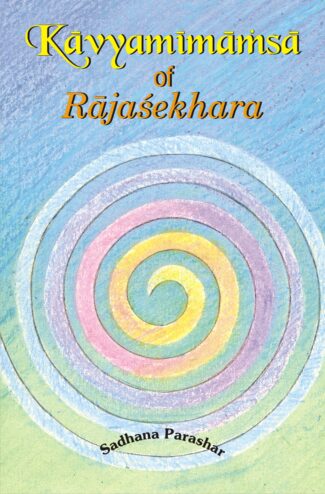
Written sometime during 880-920 ad by Rajasekhara: an eminent poet, this first English translation of Kavyamimamsa is a kind of practical treatise for poets: kavisiksa manual highlighting, all possible attributes that go into the making of a good poet and a good poetic composition.
As a body, Sanskrit writings unfold Indias millennia-long, almost unbroken intellectual tradition: not only of philosophy and grammar, but of literary theory as well. The concepts and critical theories, which the Sanskrit poeticians advanced or the issues they sought to address, inhere both universal appeal and validity. And, with certain modifications, these can well live up to the demands of modern literature. In this long and powerful tradition of Sanskrit literary theory that marked a definitive begining with Bharatas Natyashastra (first century ad), Kavyamimamsa is a monumental work. Written sometime during 880-920 ad by Rajashekhara: an eminent poet, dramatist and critic, it is a kind of practical treatise for poets: kavishiksha manual highlighting, as it does, all possible attributes that go into the making of a good poet and a good poetic composition. Among other relevant aspects, Rajashekhara also includes here a systematic exposition of the views/opinions of his predecessors, with illustrations of the literary practices of various times and climes put down after careful empirical observation. Now, when there is a growing scholarly interest in the study of Sanskrit literary theory and how it is positioned vis-a-vis the Western critical tenets, Dr. Sadhana Parashar brings Rajashekharas classic within everyones reach offering the first-ever, complete English translation of Kavyamimamsa, with its original Sanskrit text and comprehensive explanatory notes. For sure, it is invaluable to the scholars of linguistics and literary criticism.

Written sometime during 880-920 ad by Rajasekhara: an eminent poet, this first English translation of Kavyamimamsa is a kind of practical treatise for poets: kavisiksa manual highlighting, all possible attributes that go into the making of a good poet and a good poetic composition.
As a body, Sanskrit writings unfold Indias millennia-long, almost unbroken intellectual tradition: not only of philosophy and grammar, but of literary theory as well. The concepts and critical theories, which the Sanskrit poeticians advanced or the issues they sought to address, inhere both universal appeal and validity. And, with certain modifications, these can well live up to the demands of modern literature. In this long and powerful tradition of Sanskrit literary theory that marked a definitive begining with Bharatas Natyashastra (first century ad), Kavyamimamsa is a monumental work. Written sometime during 880-920 ad by Rajashekhara: an eminent poet, dramatist and critic, it is a kind of practical treatise for poets: kavishiksha manual highlighting, as it does, all possible attributes that go into the making of a good poet and a good poetic composition. Among other relevant aspects, Rajashekhara also includes here a systematic exposition of the views/opinions of his predecessors, with illustrations of the literary practices of various times and climes put down after careful empirical observation. Now, when there is a growing scholarly interest in the study of Sanskrit literary theory and how it is positioned vis-a-vis the Western critical tenets, Dr. Sadhana Parashar brings Rajashekharas classic within everyones reach offering the first-ever, complete English translation of Kavyamimamsa, with its original Sanskrit text and comprehensive explanatory notes. For sure, it is invaluable to the scholars of linguistics and literary criticism.

Swami Muni Narayana Prasad renders a superbly novel analysis of this Upanisad in the backdrop of recent developments in various scientific disciplines and attempts to show that mysticism is a corollary to scientific investigation.
Kenopanishad is one of the major Upanishads containing the quintessence of the teachings of the ancient Indian seers. It represents their spiritual quest to apprehend the nature of the Ultimate Being and comprises the yearning for the wisdom that explains the relation of human life to the world and the reality. The beauty of this Upanishad is greatly enhanced by the dialogue between the disciple and the preceptor, through which it continues its quest. Swami Muni Narayana Prasad, the renowned scholar on the Upanishadic tradition, renders a superbly novel analysis of this difficult text in the light of the modern mans need for value and spiritual security making a strikingly beautiful synthesis between the ancient and the modern. Presenting the teachings of Kenopanishad in the backdrop of the recent developments in the area of physics, chemistry, biology and psychology is no mean task and constitutes the exclusiveness of this book. The disciplines of science in the pursuit of the basic truth stumble at some invisible and unconceptualisable Reality, which may be another name for mysticism. Through very cogent arguments the author has successfully vindicated that mysticism is a corollary to scientific investigation and not opposed to it. The authors prolonged association with the Upanishadic thought along with the insight he received from the works of his preceptors Narayana Guru and Nataraja Guru makes the commentaries of this text stimulating and unique. The original Sanskrit text along with the Roman transliteration and English paraphrasing enhance the value of this monumental commentary.

The thirteen texts of this book address various aspects of Krishnas childhood in the Harivamsha. It demonstrates that these stories of Krishnas childhood were carefully composed by brahmanas who knew fully well what they were doing.
Written over a thirty-year period, the thirteen texts of this book some of which have been updated, others translated from the original French address various aspects of Krishnas childhood in the Harivamsha. As a part of a continuous effort to better understand this oft-neglected complement to the Mahabharata, the present book demonstrates that these stories of Krishnas childhood were carefully composed by brahmanas who knew fully well what they were doing.
During the ten or so years he spends as a herder in the forest surrounding Mathura, Krishna prepares himself to kill the evil king Kamsa: when packs of wolves spring from the hairs of his body, he manifests his destructive power; he appears as a true avatara when he dives into the Yamuna to subdue the snake Kaliya; he reveals himself as a new Brahma able to create a new world when he uplifts Mount Govardhana with which he has just identified himself, then sheltering cows and herders in his own body.
It is authors contention throughout these chapters that these episodes cannot be dismissed as a hotchpotch of legends borrowed from the Abhiras or similar pastoral tribes. Neither does one do justice to the genre when one reinterprets the story symbolically, as if it were the product of an overactive imagination. Rejecting these positions, the author instead attempts to show here how these talented storytellers carefully crafted a narrative, often using material drawn from their own Vedic tradition, in order to address the new concerns of their audiences.
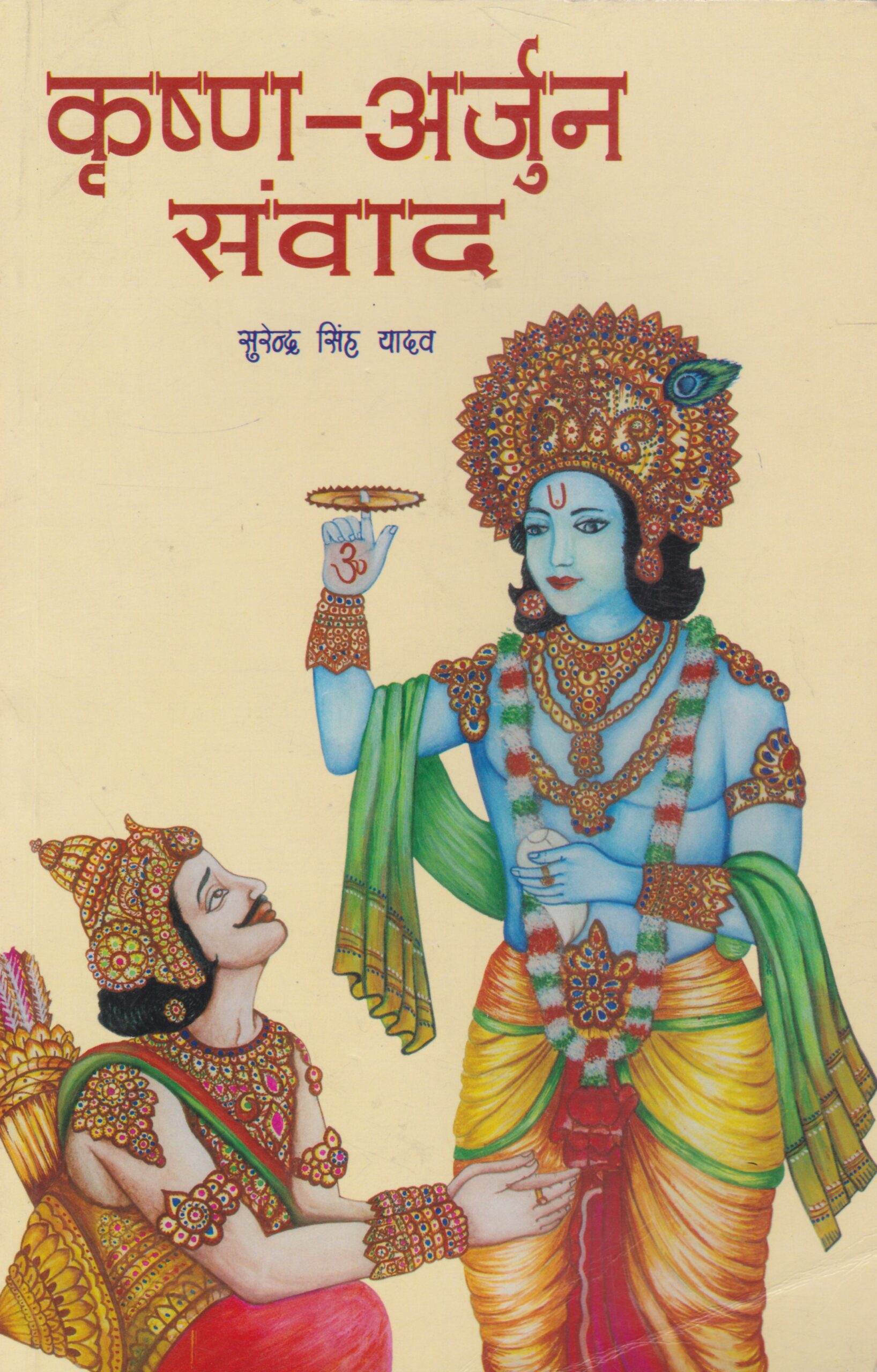
Gita is a great work emphasing on work and worship. Krsna advises Arjuna that he should not expect results. Instead, concentrate on his work with complete vigour and veneration. Gita is a path to sublimity where work meets worship as presented in this magnum opus here.
Gita is a great work emphasing on work and worship. Krsna advises Arjuna that he should not expect results. Instead, concentrate on his work with complete vigour and veneration. Gita is a path to sublimity where work meets worship as presented in this magnum opus here.
| × |
|
Rasa in Aesthetics 1 x ₹891.00 |
| × |
|
Stree Ek Kavya (Woman as Poem) 1 x ₹986.00 |
| × |
|
The Karaka Theory Embodited in Ramas Story 1 x ₹585.00 |